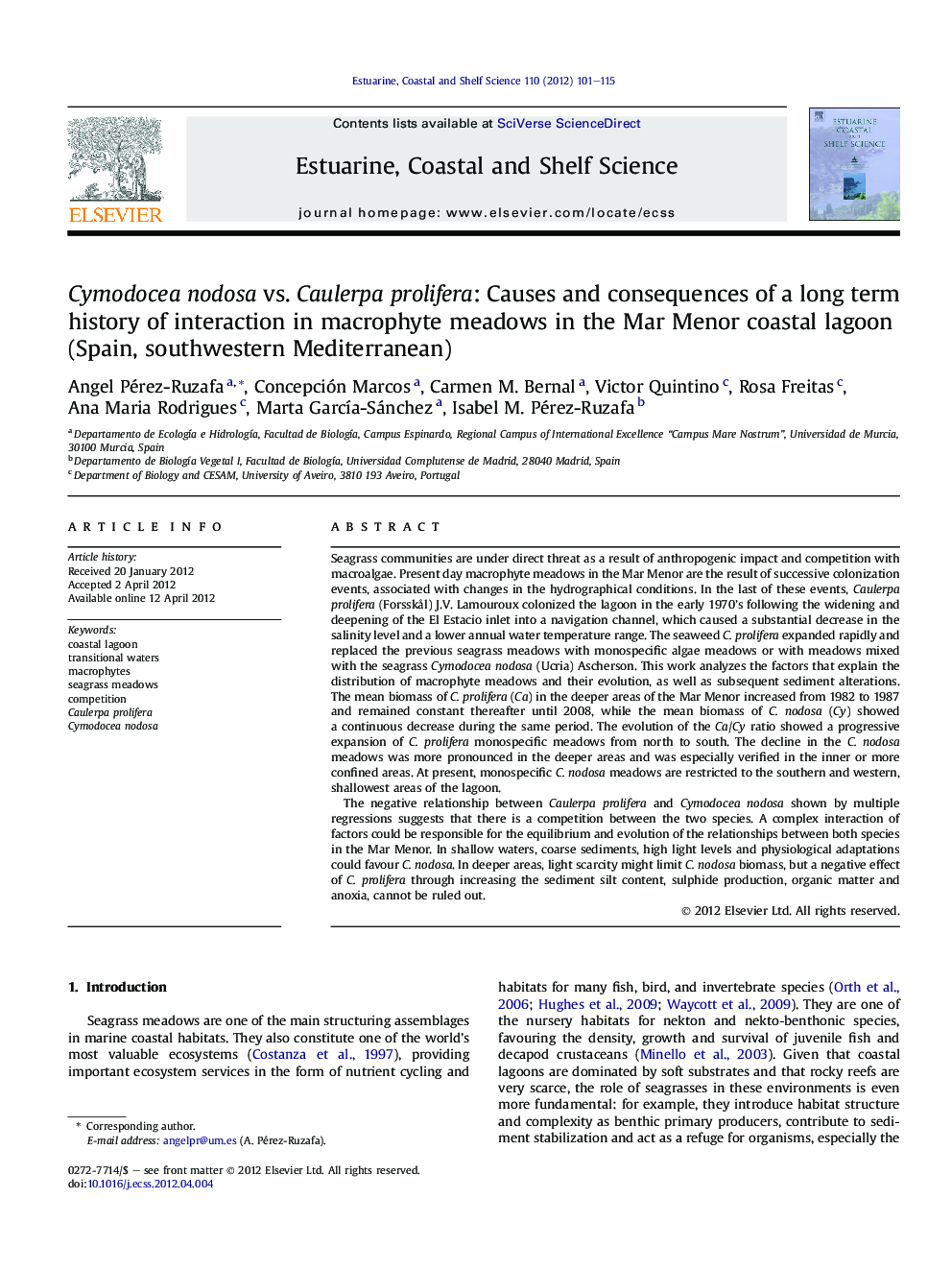| کد مقاله | کد نشریه | سال انتشار | مقاله انگلیسی | نسخه تمام متن |
|---|---|---|---|---|
| 4540118 | 1626685 | 2012 | 15 صفحه PDF | دانلود رایگان |

Seagrass communities are under direct threat as a result of anthropogenic impact and competition with macroalgae. Present day macrophyte meadows in the Mar Menor are the result of successive colonization events, associated with changes in the hydrographical conditions. In the last of these events, Caulerpa prolifera (Forsskål) J.V. Lamouroux colonized the lagoon in the early 1970's following the widening and deepening of the El Estacio inlet into a navigation channel, which caused a substantial decrease in the salinity level and a lower annual water temperature range. The seaweed C. prolifera expanded rapidly and replaced the previous seagrass meadows with monospecific algae meadows or with meadows mixed with the seagrass Cymodocea nodosa (Ucria) Ascherson. This work analyzes the factors that explain the distribution of macrophyte meadows and their evolution, as well as subsequent sediment alterations. The mean biomass of C. prolifera (Ca) in the deeper areas of the Mar Menor increased from 1982 to 1987 and remained constant thereafter until 2008, while the mean biomass of C. nodosa (Cy) showed a continuous decrease during the same period. The evolution of the Ca/Cy ratio showed a progressive expansion of C. prolifera monospecific meadows from north to south. The decline in the C. nodosa meadows was more pronounced in the deeper areas and was especially verified in the inner or more confined areas. At present, monospecific C. nodosa meadows are restricted to the southern and western, shallowest areas of the lagoon.The negative relationship between Caulerpa prolifera and Cymodocea nodosa shown by multiple regressions suggests that there is a competition between the two species. A complex interaction of factors could be responsible for the equilibrium and evolution of the relationships between both species in the Mar Menor. In shallow waters, coarse sediments, high light levels and physiological adaptations could favour C. nodosa. In deeper areas, light scarcity might limit C. nodosa biomass, but a negative effect of C. prolifera through increasing the sediment silt content, sulphide production, organic matter and anoxia, cannot be ruled out.
Journal: Estuarine, Coastal and Shelf Science - Volume 110, 10 September 2012, Pages 101–115